^
1966 Jorge Camilo Torres Restrepo,
prêtre révolutionnaire, en combattant contre l'armée
colombienne.
Né en 1929 à Bogotá,
dans une famille de la grande bourgeoisie citadine, Camilo Torres fait des
études de droit et collabore au journal La Razón. Ordonné prêtre en 1952,
il étudie la sociologie à Louvain (Leuven en Belgique), où il est nommé
vice-recteur pour l’Amérique latine. À Paris, il travaille un temps avec
l’abbé Pierre, puis obtient sa licence de sociologie en 1958. Aumônier des
étudiants à son retour à Bogotá, il crée la faculté de sociologie et entreprend
diverses études sur les problèmes sociaux en Colombie; il lance alors un
mouvement d’universitaires et de membres des professions libérales pour
le développement communal, ce qui lui vaut de participer à l’élaboration
d’un projet de loi relatif à l’action communale. Exclu de l’université pour
avoir défendu deux étudiants communistes, Torres devient vicaire à Veracruz
et crée plusieurs coopératives dans un quartier ouvrier de Bogotá. Tissant
des liens avec les représentants de différents courants politiques, tous
acquis à des réformes, il est amené à s’opposer de plus en plus au gouvernement
et à la hiérarchie catholique. Il décide alors de se lancer ouvertement
dans l’action politique et cherche à constituer un front regroupant l’ensemble
des forces progressistes. Il crée un rassemblement du Front uni du peuple
colombien que soutiennent tous les partis démocratiques. Ce rassemblement
prône une ouverture commerciale avec tous les pays, l’établissement de nouvelles
relations avec Cuba, le développement du mouvement coopératif, le rétablissement
des libertés individuelles et publiques. Le "Frente unido" répond à l’attente
des Colombiens qui attendaient un renouveau politique, mais se heurte à
l’insuffisance de cadres politiques formés et à la répression gouvernementale;
des divergences se font jour au sein du Front. L’appel de Camilo Torres,
lors des élections de mars 1964, en faveur d’une "abstention active, belligérante
et révolutionnaire", entraîne la défection du Parti social-démocrate chrétien
et du Mouvement révolutionnaire libéral; le parti de Rojas Pinilla et le
Parti communiste prennent également leurs distances. En difficulté avec
la hiérarchie catholique, Torres demande, en juin 1964, sa réduction à l’état
laïc. Mais jusqu’au bout il se considérera comme chrétien et comme prêtre.
Il estime désormais nulles les chances de transformer la vie politique par
la voie légale; il prend contact avec les groupes armés formés par le P.C.;
mais ce dernier, pour lequel la guérilla n’est qu’un appui à l’action légale,
ne tient guère à compter dans ses rangs une personnalité aussi prestigieuse.
Torres rejoint alors l’Armée de libération nationale, d’orientation castriste,
en octobre 1965. Dans sa dernière allocution, en janvier 1966, il déclare
"la lutte armée, la seule voie qui reste encore libre... pas un pas en arrière;
pour la liberté ou la mort;" Celle-ci le prend le 15 février, au cours d’un
accrochage avec l’armée. Dès lors, son nom devient, en Amérique latine,
un symbole pour les jeunes prêtres et chrétiens contestataires.
Jorge Camilo Torres Restrepo, sacerdote y guerrillero colombiano.
Sacerdote, sociólogo y revolucionario nacido en Bogotá, el 03 febrero de
1929, muerto en Patio Cemento, Santander, el 15 de febrero de 1966. La vida
de Jorge Camilo Torres Restrepo estuvo marcada por las premoniciones, el
mito y la ficción. Efectivamente, días antes de su nacimiento una pitonisa
le predijo a su madre, Isabel Restrepo de Torres, que el niño por nacer
sería, con el tiempo, figura grande en la religión o en la política. Años
después, en Lima, en julio de 1965, cuando ya había dejado la sotana e iniciado
una activa vida política desde el Frente Unido, y había decidido vincularse
al Ejército de Liberación Nacional (ELN), en una reunión el sacerdote peruano
Gustavo Gutiérrez, a quien Camilo le comentó su deseo e interés de integrarse
a la guerrilla, le expresó francamente que, en caso de alistarse en la lucha
revolucionaria, lo mejor que podía pasarle era que lo mataran con la primera
bala, en el primer combate. Meses después, cuando se dirigía al fortín del
ELN en las montañas del departamento de Santander y casi es sorprendido
por una patrulla del ejército, Torres Restrepo le comentó a su guía, con
el humor que siempre lo caracterizó: «Casi no llego siquiera al campamento».
Muerto en combate, el lugar donde se encuentra su tumba es un misterio pues,
a excepción del entonces coronel Alvaro Valencia Tovar, nadie sabe dónde
está sepultado. De todas maneras, es un hecho que Camilo 'I'orres Restrepo
constituye un símbolo de rebeldía latinoamericana, y se ha convertido en
un mito.
Nacido en el tradicional barrio
de La Candelaria, en el seno de una familia burguesa y liberal encabezada
por el prestigioso médico pediatra Calixto Torres Umaña, los primeros meses
de su vida los pasó Camilo en un apartamento anexo al lujoso Hotel Ritz,
propiedad de sus padres. Luego, en 1931, se trasladaron a vivir a Ginebra
(Suiza), pues el doctor Torres fue nombrado representante por Colombia en
la Liga de las Naciones. Debido a una separación matrimonial temporal, doña
Isabel sus hijos Gerda y Edgar Westendorp, fruto de su primer matrimonio,
y los Torres Restrepo, Fernando y Camilo, vivieron en Barcelona. En 1934
retornaron todos juntos a Bogotá, y en 1937 el matrimonio se disolvió quedando
los dos hermanos Torres Restrepo bajo la tutela de su madre, pero con la
supervisión y responsabilidad económica del padre. Luego del divorcio, Camilo,
su hermano y su madre se fueron a vivir a las afueras de Bogotá, en un finca
lechera llamada La Granja. Camilo Torres Restrepo se graduó d~ bachiller
en el año 1946, en el Liceo Cervantes. En el primer semestre de 1947 entró
a estudiar Derecho en la Universidad Nacional. Luego de un contacto con
dos promotores vocacionales dominicos y de un período de incertidumbre,
decidió hacerse fraile de la comunidad de SantoTomás. Sus padres se opusieron
a su decisión, pero fue tal la presión que al fin aceptaron que Camilo entrara,
en septiembre de 1947, al Seminario Conciliar de Bogotá. En realidad, nadie
pensó que el alocado hijo del doctor Calixto fuera a tomar la sotana, pues
si bien asistía los domingos a misa, su forma de actuar y la vida de comodidades
a la que estaba acostumbrado, decían otra cosa. Sin embargo, al entrar al
seminario lo hizo plenamente convencido y desde ese momento, y durante casi
dieciocho años, asumió la vida sacerdotal con gran responsabilidad. En el
seminario, ubicado en las Sierras del Chicó, permaneció durante siete años.
Allí comenzó a interesarse por la realidad social y creó un círculo de estudios
sociales con su compañero Gustavo Pérez. Las obras leídas por los seminaristas
no eran revolucionarias, hacían énfasis en encíclicas y obras cristianas
sobre justicia social, que prohibían y censuraban el comunismo, la lucha
de clases y la propiedad colectiva. La lectura adelantada de fase crítica,
pero despertó en el joven seminarista un interés por la acción social y
por los problemas de los marginados, al punto que inició una labor con los
picapedreros habitantes de las lomas aledañas al seminario. Bien pronto
comprendió que la solución al problema de la pobreza no debía buscarla en
las liberalidades de los ricos.
Camilo
Torres Restrepo se ordenó como sacerdote el 29 de agosto de 1954, y al día
siguiente ofició su primera misa en la capilla del. Liceo Cervantes. El
25 de septiembre del mismo año viajó a Lovaina, vía Nueva York, con el fin
de adelantar estudios de Sociología. En Bélgica recibió gran cantidad de
influencias, en especial de la Democracia Cristiana y, del sindicalismo
cristiano, que le sirvieron para abrazar una causa que nunca abandonó: la
de los oprimidos, en el ideal, nunca alcanzado, de llevar con ellos una
vida comunitaria y compartir sus tareas y esfuerzos. Además fundó, en 1955,
el Equipo Colombiano de Investigación SocioEconómica (ECTSA), que tuvo comités
en la mayoría de los países de Europa occidental y ocupó la vicerrectoría
del Colegio Latinoamericano. Así mismo, se vinculó a la actividad estudiantil
latinoamericana, vio muy de cerca los tugurios existentes en París y, en
1957, además de conocer a Marguerite Marie Guitemie Olivieri; quien llegaría
a ser su amiga, confidente y secretaria, tuvo un acercamiento con los grupos
de la resistencia argelina ~n París, y alcanzó a vislumbrar lo que era un
proceso de liberación nacional y el papel que un intelectual podía cumplir
en tal lucha. En 1958 obtuvo su título de sociólogo, con la tesis "Una
aproximación estadística a la realidad socioeconómíca de Bogotá", publicada
en 1987 como La proletnrización de Bogotá, que fue dirigida por el profesor
Yves Urbain. Este trabajo le sirvió, al igual que otras investigaciones
posteriores, para familiarizarse con las estructuras sociales de los medios
urbanos v rurales; aprendió a conocer las personas y a sacar conclusiones.
Este trabajo tiene las lógicas limitaciones de una monografía de pregrado:
ritualismo académico, presentación mecánica de conceptos, bibliografías
v marcos teóricos que después no encuentran ubicación alguna en el cuerpo
del escrito; sin embargo, inauguró los estudios :modernos sobre la ciudad
en Colombia. De regreso al país, el padre Camilo permaneció tres meses en
Estados Unidos, tomando un curso de sociología en la Universidad de Minneápolis
(Minnesota), en la que conoció a Teodore Caplow. Llegó a Colombia en enero
de 1959 y fue nombrado capellán auxiliar de la Universidad Nacional y profesor
del recién fundado Departamento de Sociología que serviría de base a la
facultad. Comenzó entonces una intensa actividad como docente, dictando
sociología urbana y de trabajo social. Durante e1 año 1959-1960, el padre
Camilo cumplió una importante labor investigativa y de acción social en
el barrio obrero de Tunjuelito. Al principio, comenzó a ir con sus estudiantes
de sociología motivado por el interés de observar la realidad cotidiana,
el nivel de vida de la clase obrera y los problemas creados por la migración
de campesinos a la ciudad. Pero en la medida que el trabajo fue conocido
por estudiantes de otras facultades, poco a poco se fueron integrando a
él con el fin de mejorar el nivel de vida de los habitantes del barrio.
Fue tan importante la labor cumplida por Camilo Torres y su grupo en Tunjuelito,
que en el mismo año de 1959 el emprendedor sacerdote y profesor obtuvo el
Premio Nacional de Beneficencia "Alejandro Angel Escobar", con
un plan piloto para ese sector capitalino. Así mismo, el Ministerio de Educación
lo invitó a integrar un comité para el desarrollo de la comunidad, que a
partir de julio de 1959 pasó a llamarse Acción Comunal. Aunque escéptico,
Torres Restrepo colaboró con la nueva entidad e involucró a la Universidad;
allí fundó, en 1960, el MUNIPROC (Movimiento Universitario para Promoción
Comunal), que gracias a sus buenas influencias logró financiarse y pudo
mantenerse como un ente independiente de la Acción Comunal y demás instituciones
oficiales. Además, en 1961 se creó el Consejo Interfacultades para el desarrollo
de la comunidad. Como capellán auxiliar de la Universidad Nacional, el padre
Camilo introdujo en Colombia muchas de las reformas del Concilio Vaticano
n: no daba la misa de espaldas al público, sino de frente, y decía la misa
en castellano, no en latín como hasta el momento era ley. Pregonó que el
problema no era rezar más, sino amar más; aprobó el noviazgo para curas
y seminaristas, y abogó por el ecumenismo.
A finales de 1961, Camilo Torres comenzó a tener problemas con el cardenal
Luis Concha Córdoba, quien no veía con buenos ojos la vinculación del sociólogo
y sacerdote a la Universidad. El asunto fue tornándose cada vez más espinoso
y tuvo su punto culminante cuando, en julio de 1962, luego de un período
de agitación estudiantil, la Universidad fue cerrada y el joven subcapellán
y profesor incitó al cuerpo docente universitario a seguir dictando las
clases y, después de una larga asamblea especial, los estudiantes lo declararon
rector. El prelado no aguantó más y lo destituyó de su cargo como capellán
~ de los trabajos académicos y funciones administrativas que desempeñaba
en la Universidad. Luego de alguna presión por parte del centro docente,
el cardenal aceptó que terminara sus clases del segundo semestre académico,
pero que siguiera al frente de la parroquia de La Veracruz, a donde había
sido enviado.
Por este tiempo, Camilo
Torrez fue nombrado miembro de la junta directiva del recién creado Instituto
de la Reforma Agraria (INCORA). Allí tuvo infinidad de enfrentamientos con
diferentes autoridades, pues permanentemente cuestionó las políticas del
Ministerio de Agricultura; pero desde ese privilegiado lugar, no sólo pudo
conocer gran parte de los problemas del campesino colombiano, sino hacerse
una idea muy fiel de la burocracia y del proselitismo del Estado. Así mismo,
por esa época Camilo Torres fue nombrado decano del Instituto de Administración
Social de la Escuela Superior de Administración Pública (ESAP), institución
en la que permaneció hasta fines de abril de 1965, cuando, por presiones
de la curia, decidió viajar a Lovaina, el 22 de mayo de 1965, para adelantar
estudios de doctorado en sociología. Su proyecto de tesis, diseñado en 1962,
buscaba estudiar, siguiendo el ejemplo de Oscar Léwis, la asimilación de
migrantes a los medios urbanos y examinar en detalle la experiencia de diez
familias de origen campesino residentes en Bogotá. No obstante, Torres nunca
emprendió este viaje, pues decidió, más bien, tomar los rumbos de la lucha
armada que los del intelecto. De todas formas, en la ESAP Camilo Torres
pudo trabajar en el desarrollo de la comunidad, y organizar cursos para
campesinos en todo el país. Es particularmente importante la escuela que
fundó en Yopal (Casanare), y que se llamó la Unidad de Acción Rural (UAR).
En realidad, los problemas suscitados
entre Camilo Torres y el cardenal Concha tuvieron diferentes causas que
no sólo radicaron en la labor proselitista de Camilo dentro del estudiantado
y en sus actividades académicas, sino en lo que representaban uno y otro.
El cardenal enfrentaba un momento difícil, suerte de renegociación en las
relaciones entre el Estado y la Iglesia; por eso había que borrar la idea
dejada por la reciente violencia de que los curas participaban abiertamente
en la política del país, y que el púlpito era una tribuna desde donde se
decidían los destinos de la nación. Por su parte, Torres Restrepo quería
que la Iglesia se reformara, que cumpliera un papel más social, en beneficio
de los más necesitados, y en aras de tal ideal muchas de sus actuaciones
públicas parecían turbulentas y llegaron a entorpecer las armónicas relaciones
entre el poder civil y el eclesiástico. Así pues, uno y otro personaje representaba
un punto de vista distinto sobre el papel de la Iglesia. Tales concepciones
frecuentemente chocaron, directa o indirectamente.
En 1960, Torres Restrepo hizo una evaluación de las escuelas radiofónicas,
Radio Sutatenza, de monseñor José Joaquín Salcedo, que sin ser analítica,
demostraba que ese programa era demagógico y perjudicial para el campesino,
a quien estaba principalmente orientado. Salcedo se molestó con Camilo y
comenzó una controversia entre los dos sacerdotes que llegó a su punto culminante
cuando el joven sociólogo y subcapellán le expresó al prelado que su anticomunismo
[el de Salcedo], lo hacía ciego y ridículo ante cualquier movimiento reformista.
La campaña anticomunista emprendida desde los programas emitidos en Radio
Sutatenza, incitaba al odio y ocasionaba violencia. Fueron muchos los hechos
que, como éste, ampliaron la distancia entre el cardenal y Camilo Torres.
Sin lugar a dudas, la salida de la Facultad de Sociología de la Universidad
Nacional se precipitó debido a la activa participación que tuvo Camilo en
la búsqueda de la financiación y redacción de la investigación emprendida
años atrás por monseñor Germán Guzmán Campos, que terminó con la edición
de los tomos del libro La Violencia en Colombia (1962 y 1964). Este trabajo,
por lo menos el primer volumen, levantó muchas ampollas dentro de la clase
política, la Iglesia, la comunidad académica y el ejército, pues tocó aspectos
que habían ocurrido recientemente y que involucraban muy directamente a
la clase dirigente y dominante del país. Camilo no aparecía como autor,
pero su papel fue importante. Precisamente fue en torno a la violencia que
escribió su último ensayo sociológico de fondo: La violencia y los campos
socioculturales en las áreas rurales(1963), presentado en el primer Congreso
Nacional de Sociología, en el que planteó que la violencia era factor importante
del cambio social.
El permanente trabajo
de Camilo Torres con la docencia y su acercamiento a los problemas más álgidos
del país fueron radicalizándolo: en agosto de 1962, en Buenos Aires, en
una reunión previa a la fundación del CELATIN (Consejo Episcopal Latinoamericano),
planteó que los marxistas luchaban por la nueva sociedad y, por lo tanto,
los cristianos debían estar luchando a su lado. En mayo de 1964, antes del
bombardeo a la llamada República independiente de Marquetalia, Torres quiso
entrar antes de que empezaran las acciones militares, junto con Gustavo
Pérez, Orlando Fals Borda, Eduardo Umaña Luna, Germán Guzmán y un político
de apellido Muñoz, para emprender una misión de paz independiente; sin embargo
no pudo hacerlo, pues el cardenal Concha no dio su permiso a Camilo, ni
a Guzmán Campos, ni a Gustavo Pérez por ser sacerdotes de su feligresía.
De todas formas, el episodio de Marquetalia lo impulsó de una manera mucho
más abierta a la acción. Así, en septiembre de 1964 asistió en Lovaina a
un congreso de Teología Pastoral en el que planteó que la caridad cristiana,
si quería ser eficaz y no un asunto meramente verbal, tenía que ocuparse
de la planificación económica, la cual, en los países subdesarrollados,
suponía un cambio total en las estructuras del poder. Los católicos debían
colaborar con los marxistas, pues éstos estaban en la vanguardia de la lucha
por el cambio. A partir de enero de 1965, Camilo Torres trató de ponerse
en comunicación con el recién creado (julio de 1964) Ejército de Liberación
Nacional (ELN), y en febrero planteó una plataforma para un movimiento de
unidad popular: el Frente Unido de Movimientos Populares. Contactado por
el ELN, el 27 de junio de 1965 Camilo Torres abandonó el sacerdocio. Días
después de esta trascendental decisión, el 3 de julio, viajó a las montañas
de Santander a entrevistarse, por primera definitiva vez, con el entonces
comandante del ELN, Fabio Vásquez Castaño. En esta conferencia plantearon
la estrategia a seguir: Camilo seguiría su programa de agitación política
con el Frente Unido en las ciudades y pueblos del país, pero, en un momento
dado, cuando la dirigencia guerrillera lo creyera necesario, debería integrarse
a la lucha armada revolucionaria en los montes. Así mismo, se acordó que
el movimiento liderado por Torres Restrepo debía tener un periódico y atraer
a políticos de todos los sectores. Es decir, Camilo entró a formar parte
del ELN, pero debía considerarse como «un militante en comisión en la ciudad».
A partir de la conferencia de principios
de julio y hasta el 18 de octubre, cuando Camilo Torres partió para la guerrilla,
el ex cura y ex profesor universitario se dedicó, junto con Jaime Arenas,
su contacto directo con el ELN, y Marguerite Guitemié Olivieri, a trabajar
con el Frente Unido y en la publicación del semanario del movimiento, cuyo
primer número apareció el 26 de agosto y tuvo un éxito arrollador: 45000
ejemplares se vendieron en cuestión de horas. La carismática figura de Camilo
aglutinó a gentes de diferentes tendencias de la izquierda y de la política
tradicional, y sobre todo captó la atención de grandes multitudes. A semejanza
del asesinado líder Jorge Eliécer Gaitán, Camilo Torres llenó las plazas
públicas y tuvo un vertiginoso ascenso político. Pero su éxito pronto generó
problemas: los políticos de todos los lados, especialmente los de la disidencia,
quisieron captarlo para que atrayera a las masas hacia las urnas, cosa a
la que Camilo se negó sistemáticamente pues estaba convencido del abstencionismo
como posición revolucionaria. Se generaron entonces grandes contradicciones,
inconsistencias que llevaron a un camino sin salida al movimiento y al caudillo.
Efectivamente, a consecuencia de su radicalismo, poco a poco Camilo fue
rompiendo con sus amigos y con los de su clase, y en torno a él se fue estrechando
un círculo. El periódico, a consecuencia de los rompimientos con los "electores"
y de su falta de maquinaria organizativa y de recursos económicos suficientes,
se convirtió pronto en un fracaso. Además, había indicios muy serios de
que la derecha quería asesinarlo. Entonces, Fabio Vásquez ordenó que dejara
su comisión en la ciudad y partiera para la guerrilla, disposición a la
que Camilo se acogió y cumplió al pie de Ja letra. Noventa días después
de su ajustamiento y cumpliendo la predicción hecha por el cura Gutiérrez,
Camilo Torres murió en el primer combate en el que participó, cuando quiso
apoderarse del fusil de un soldado dado de baja en la emboscada. |

 On a February
15:
On a February
15: 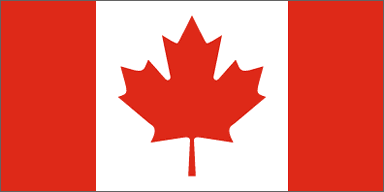
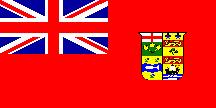
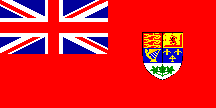
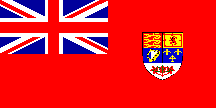

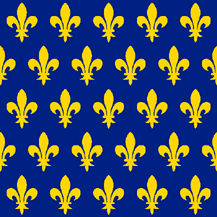
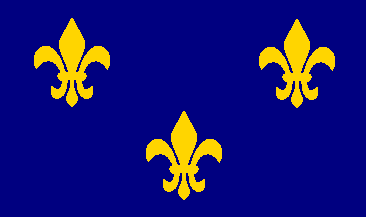
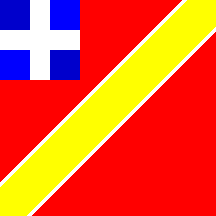
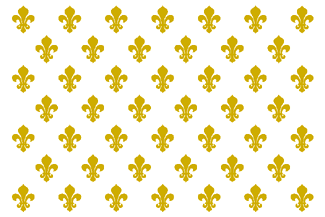
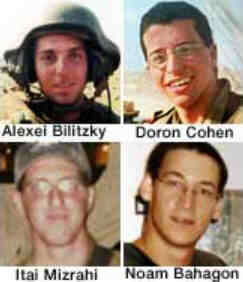
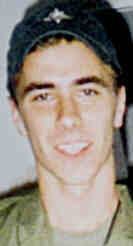 2002
Israeli Staff Sgt. Lee Nahman Akonis, 20, [< photo]
shot at close range by a group of Palestinians while he was guarding, with
two others, the Surda checkpoint just north of Ramallah, West Bank.
2002
Israeli Staff Sgt. Lee Nahman Akonis, 20, [< photo]
shot at close range by a group of Palestinians while he was guarding, with
two others, the Surda checkpoint just north of Ramallah, West Bank. An explosion sinks the battleship USS.
Maine (
An explosion sinks the battleship USS.
Maine (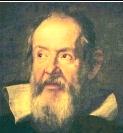 Naissance
de Galileo Galilei, dit Galilée. «Eppure, si muove», aurait-il dit de la
Terre après avoir été obligé par les juges ecclésiastiques de renier ses
découvertes astronomiques.
Naissance
de Galileo Galilei, dit Galilée. «Eppure, si muove», aurait-il dit de la
Terre après avoir été obligé par les juges ecclésiastiques de renier ses
découvertes astronomiques.